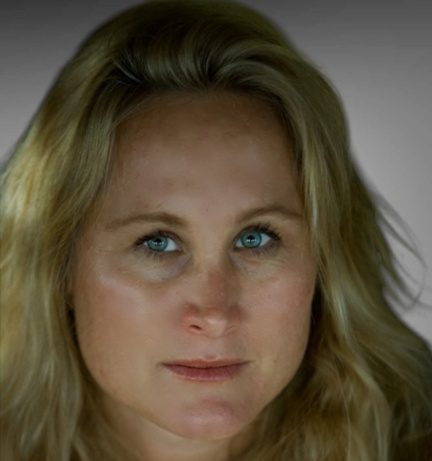In the science fiction epic “Dune” (books and movies alike), the people who inhabit the brutally harsh desert planet Arrakis wear garments called stillsuits that allow them to drink their own recycled bodily waters.
These full-body survival suits, which look a bit like a techy version of an insect’s hard upper shell, absorb moisture from sweating and urination and filter out impurities to make potable water. This water is stored in pockets and sucked through a tube.
If this sounds like magical sci-fi thinking, the principle is similar to wastewater-recycling systems already used in some water-stressed regions of the world.
And in space. Last year, NASA announced that 98% of wastewater on the International Space Station was being recovered by a new system that distills sweat, urine and other moisture in the cabin into clean drinking water.
Waterborne infrastructure is largely taken for granted by those fortunate enough to have flushing toilets. But why does this technology persist? Does it make sense that vast quantities of fresh water are used to flush away human waste, while, according to UNICEF, about 1.5 billion people in the world still lack basic sanitation? Along with discarding a precious resource — in urban areas as much as 30% of fresh water is used to flush toilets — we are losing valuable nutrients that are needed in food production by not reclaiming them.
A number of recent initiatives, some more dreamy than others, propose to stanch the flow of flushed water. But the challenges are immense, given the cost of redesigning infrastructure for human wastewater disposal and implementing it on a global scale.
I recently visited Hamburg Water Cycle, in Germany, a pioneering wastewater reuse project in Hamburg’s new neighborhood of Jenfelder Au. Rather than following the convention of piping in water from outside the city and sending back waste to treatment plants, the new system separates wastewater into three streams for reuse locally.
Rainwater is collected for watering gardens. “Gray water” from kitchen and bathroom sinks is treated for irrigation and flushing. And “black water” from vacuum toilets, a bit like those on planes, is siphoned off to a local treatment plant where it is converted into biogas. The system reduces water use by 30% and generates electricity for 225 households and heat for 70.
This project demonstrates the pathways for water conservation in new buildings, but how we go about retrofitting existing homes and commercial buildings is much more complicated.
Dr. Upmanu Lall, director of the Columbia Water Center at Columbia University, sees potential for alternative water systems in current attitudes toward other resources.
“It happened with lighting; most people have updated to LED technologies, and now the city gives incentives to phase out gas for cooking and heating,” he said, “People like to update their homes every 10 to 15 years; how can we leverage this cycle to transition to new water technologies? If we could get 10% of the population to update at a time, in 10 years we would have transitioned.”
The next question is how to reuse human “waste.” Agriculture depends on industrial fertilizers containing phosphorus from mined phosphate rock. The mineral is quickly depleted and often extracted in dangerous regions, but phosphorous can also be recovered from urine.
P-BANK is a demonstration public toilet inviting people to donate their urine for the recovery of phosphorous for reuse as garden fertilizer. According to P-BANK’s instigators, Bauhaus University Weimar in Germany, an average serving of urine (300 milliliters, or about 10 fluid ounces) contains about 200 milligrams of phosphorous, which is enough to grow three or four carrots — at least theoretically. As of now, only Switzerland has approved the use of Aurin, a liquid fertilizer made from human urine.
In Kenya, the circular waste management systems provided by Sanivation, a nongovernmental organization, convert human waste to briquettes made from feces mixed with organic matter, called super logs, and used for fuel. Another nongovernmental organization, Washking, in Ghana, where the dearth of infrastructure means more people have a smartphone than a toilet, installs low-cost toilets fitted with systems that break down organic material to turn waste into compost.
Far from revolutionary, arguments about wet versus dry sanitation, the value of “waste” and the crisis of polluted waterways would have been familiar to sanitary reformers 150 years ago.
In the 19th century, according to Barbara Penner in her 2013 book “Bathroom,” urine harvesting and sewage farming were taken seriously.
“Government officials, sanitarians, scientists and entrepreneurs dreamed of finding a way to utilise human manure,” she writes. “Most were driven by a sincere horror of how water-closets polluted the rivers and wasted the ‘God-given’ nutrients in human excreta. Most also believed however that reusing sewage could be lucrative — not an unreasonable idea in an age when there was still a working organic economy.”
Fast forward to the 1970s. Environmentalists appalled, like their predecessors, by water pollution and intrigued by the potential of reclaiming nutrients from human waste added water and energy conservation to the agenda as the environmental cost of waterborne sewage became apparent. Source books for alternative living such as Whole Earth Catalog and Mother Earth News publicized a host of off-grid systems for autonomous lifestyles.
But if circular systems didn’t take off back then, what’s changed today? Will the urgencies of water scarcity and climate change overcome obstacles to allow water recycling to be a key part of future drinking-water strategies? Although wastewater can be treated to make it safe for drinking, in many places, regulations prohibit this because of safety concerns. Another formidable obstacle is public reluctance to drink recycled water. Or at least when people realize it is recycled.
Water-scarce Singapore already recycles all wastewater, including sewage, which is served to the public under the innocuous-sounding brand name NEWater. Other water-tech marketeers are tackling the “yuck” factor straight on. Epic OneWater Brew is marketed as a beer made from gray water, a ploy to promote the environmental company Epic Cleantec’s recycling strategies. But this is a gentle provocation compared to a Berlin brew made of treated sewage, an initiative both to support Xylem Water Solution’s technology and to demonstrate to the public that water reuse is a viable way to protect scarce resources.
There are signs the threshold might be shifting.
This article originally appeared in The New York Times.




